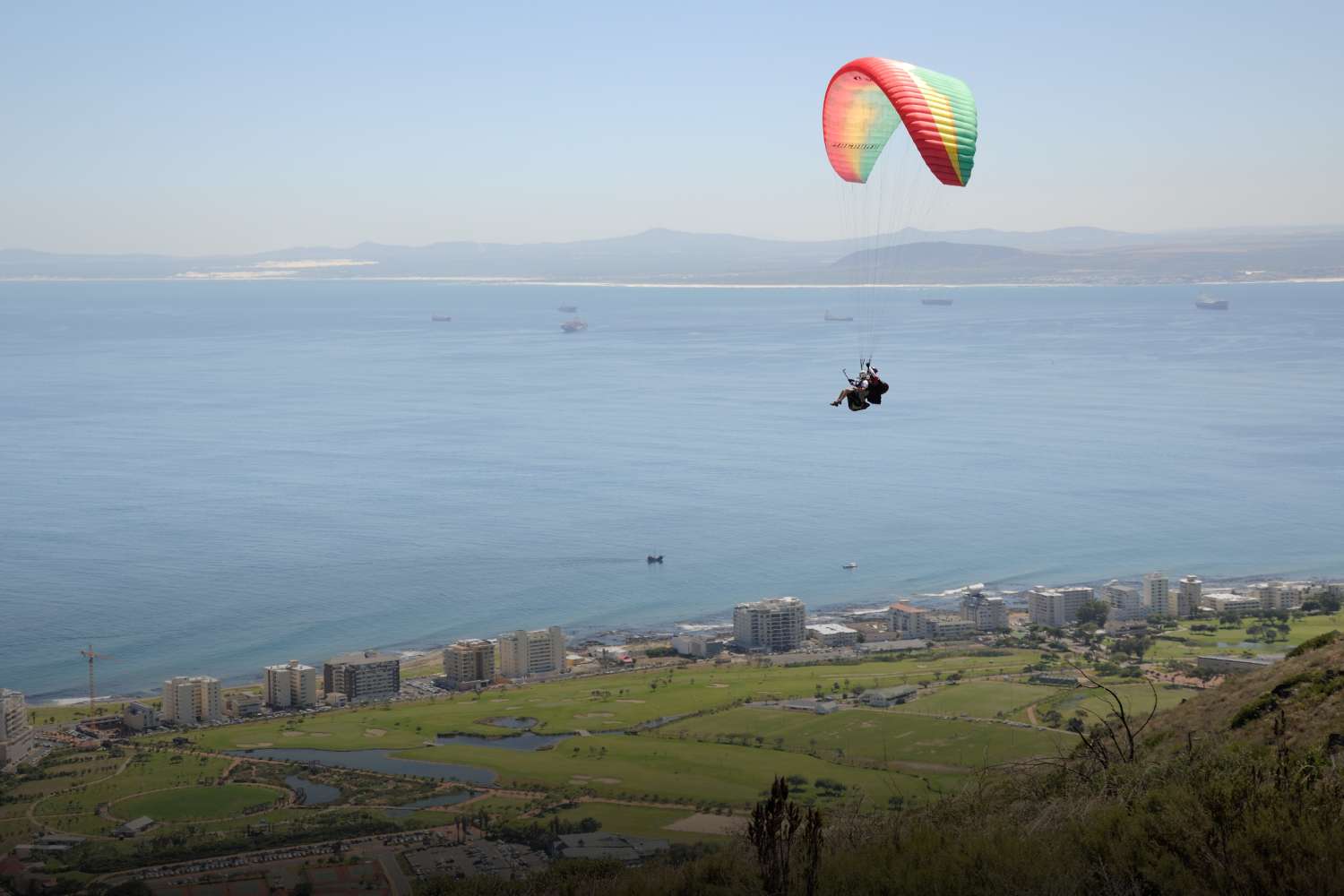Tragedy struck during a paragliding adventure in Cape Town as an Irish man lost his life following a reported collision between two paragliders above the Sea Point promenade.
Cape Town paragliding incident: Here’s everything we know
In a statement, the National Sea Rescue Institute (NSRI) confirmed the incident occurred when both paragliders were airborne, and one of them managed to land safely without any injuries to the pilot or passenger.
However, the second paraglider deployed a reserve parachute and descended into the water approximately 200 to 300 meters offshore.
Upon reaching the scene, emergency responders found the adult male pilot of the second paraglider safely on the shore, receiving treatment for minor injuries.
Unfortunately, the tandem passenger, a 58-year-old Irish man, was stranded on the rocks in the water near the Sea Point Promenade. Rescue swimmers and paramedics swiftly arrived, freed the man from his paragliding gear, and began performing CPR.
Despite their efforts, the injuries proved fatal, and the Irish man succumbed to his injuries. Authorities recovered his body from the shoreline and handed it over to the police and government Health Forensic Pathology Services for further investigation.
Police are currently conducting an inquiry into the circumstances leading up to the collision, seeking to uncover the details surrounding this tragic incident.
The likelihood of dying while paragliding
Paragliding, like any adventure sport, carries inherent risks, and it’s important to understand the likelihood of accidents and fatalities associated with the activity.
While paragliding can be a thrilling and exhilarating experience, it’s crucial to prioritise safety and take necessary precautions.
The risk of fatality while paragliding is relatively low when compared to many other activities. Paragliding is regulated and governed by safety standards and guidelines established by national and international organisations, such as the International Federation of Airworthiness and national aviation authorities.
These regulations aim to mitigate risks and ensure safe practices within the sport.
Accurate statistics on paragliding fatalities can be challenging to obtain, as they vary across different regions and are influenced by factors such as weather conditions, pilot experience, equipment quality, and adherence to safety protocols.
However, it’s important to note that paragliding accidents resulting in fatalities are relatively rare.
To mitigate the risks associated with paragliding, potential pilots undergo thorough training programs to learn the necessary skills, including understanding meteorology, equipment handling, launch techniques, flight manoeuvres, emergency procedures, and landing techniques.
Pilots are also encouraged to participate in ongoing training and maintain their skills through regular practice.
Additionally, using well-maintained and certified equipment, conducting pre-flight inspections, and flying within acceptable weather conditions are crucial safety measures.
Adhering to flight regulations, and airspace rules, and seeking proper certification and licensing further, enhance safety.
Despite the precautions and safety measures in place, it is impossible to completely eliminate the risks associated with paragliding. Unpredictable weather conditions, equipment malfunctions, and human error can still contribute to accidents.
Therefore, individuals considering paragliding should carefully assess their own abilities, consult experienced instructors, and be aware of the potential risks involved.
Ultimately, paragliding safety relies on the individual pilot’s responsibility, experience, judgment, and adherence to safety protocols.
